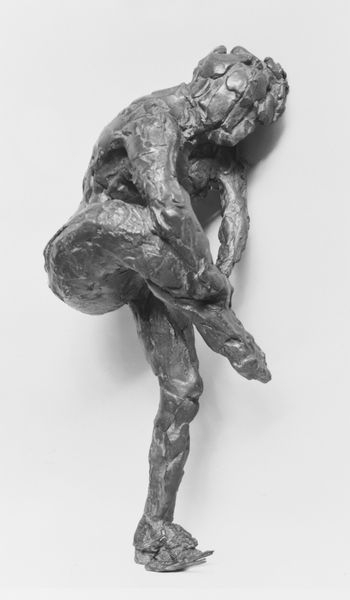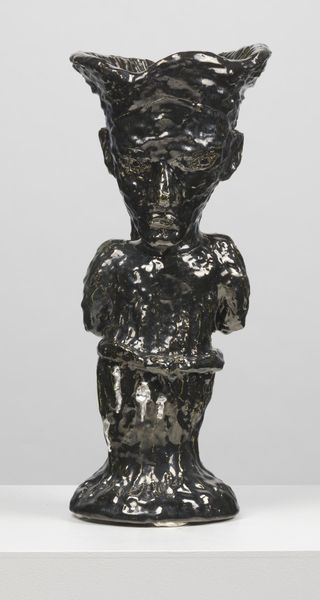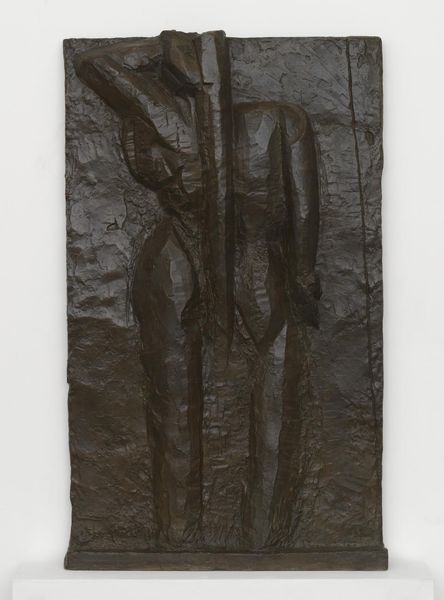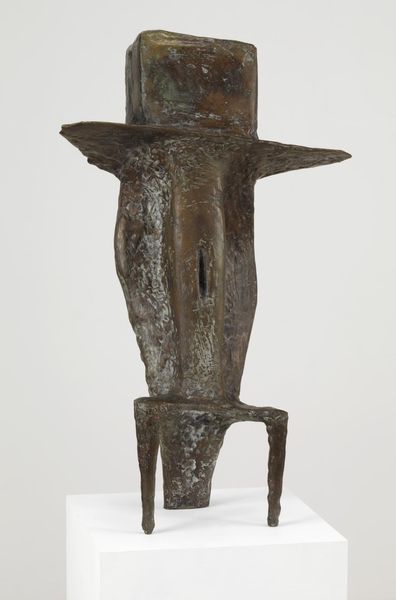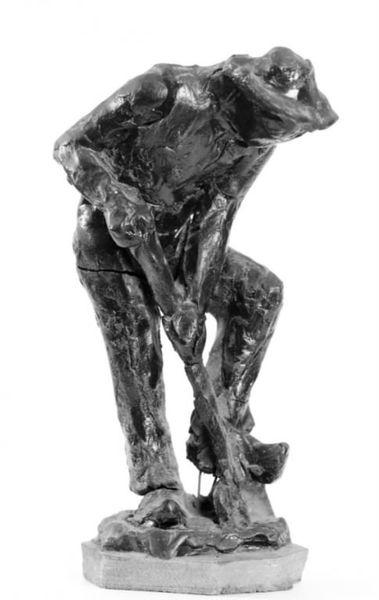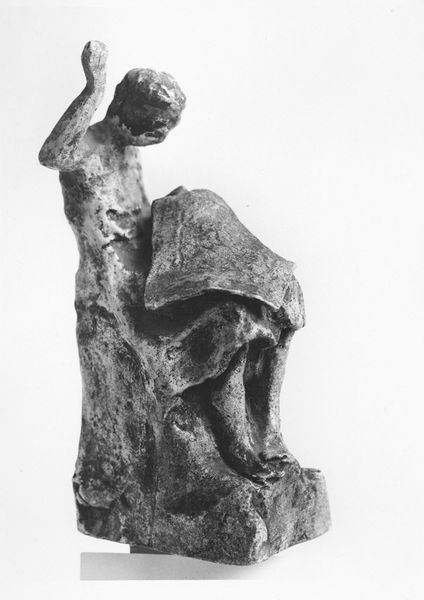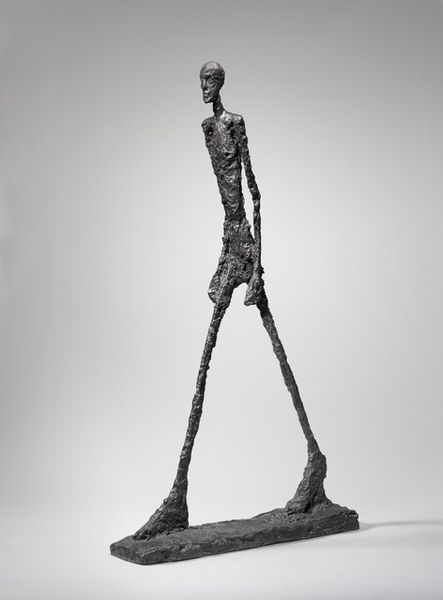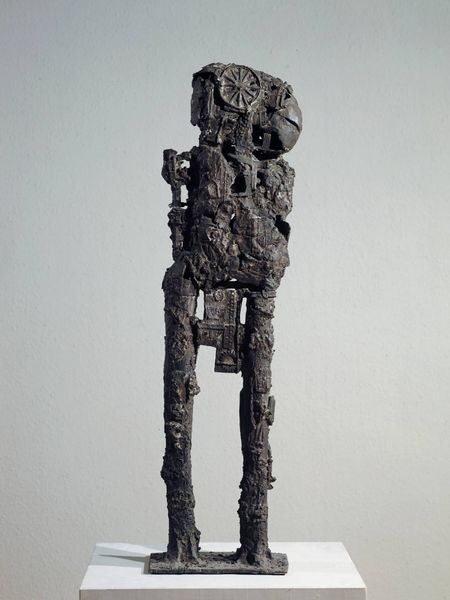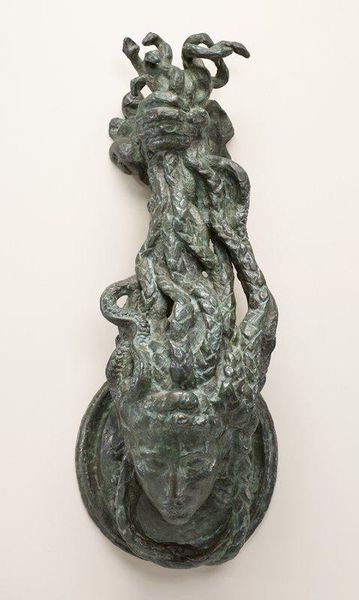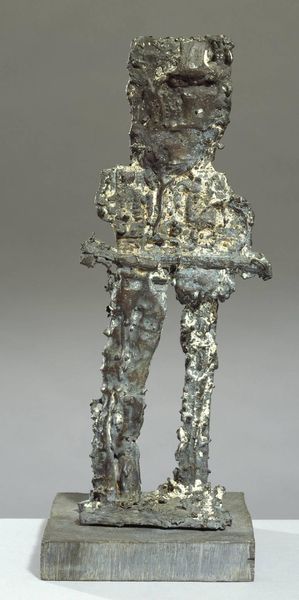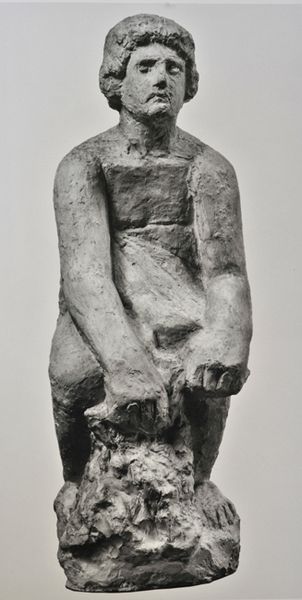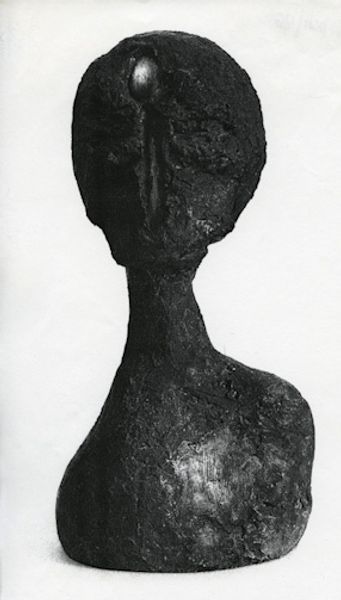
Dimensions: object: 692 x 137 x 241 mm
Copyright: © The Estate of Alberto Giacometti (Fondation Giacometti, Paris and ADAGP, Paris), licensed in the UK by ACS and DACS, London 2014 | CC-BY-NC-ND 4.0 DEED, Photo: Tate
Editor: Giacometti's bronze "Standing Woman" at the Tate Modern is striking! It feels both ancient and incredibly fragile. What do you see in this piece, beyond the immediate impression? Curator: I see a potent representation of the existential anxieties of the mid-20th century. This attenuated figure, almost spectral, speaks to the dehumanization and alienation prevalent after the World Wars. Does the figure appear resilient or defeated to you? Editor: Defeated, I think. It looks so vulnerable. Curator: Exactly. And consider Giacometti’s process – repeatedly building up and scraping away at the bronze. It mirrors the way societal structures, and even identity, were being questioned and redefined at the time. The figure persists, though scarred. It’s a statement of survival, however fragile. Editor: I never thought about the process reflecting social change. That gives me a whole new perspective. Curator: Art is a mirror to society and an act of resistance.
Comments
tatemodern 8 months ago
⋮
http://www.tate.org.uk/art/artworks/giacometti-standing-woman-t00776
Join the conversation
Join millions of artists and users on Artera today and experience the ultimate creative platform.
tatemodern 8 months ago
⋮
During the late 1950s, Giacometti made a number of fragmentary figures with their arms partly or entirely missing. Their slender forms appear vivid yet fragile. The writer Jean Genet (1910–1986) commented: 'The resemblance of his figures to each other seems to me to represent that precious point at which human beings are confronted with the most irreducible fact: the loneliness of being exactly equivalent to all others.' Gallery label, March 2025


